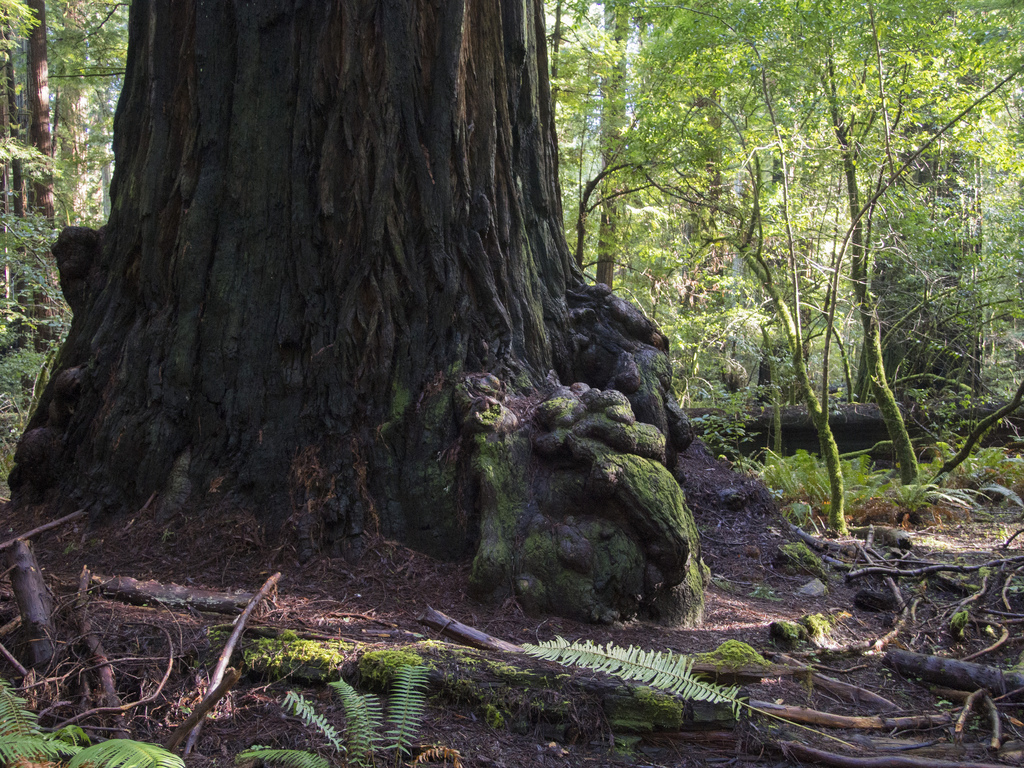Like other conifer trees, coast redwoods produce cones with seeds. However, their main reproductive strategy involves the lumpy burls that bulge from their base and roots, which sprout clones of the parent tree.
“It’s very difficult for a seed to drop on the forest floor and grow. There isn’t much light,” said Emily Burns, the science director of Save the Redwoods League. “The (burl) sprout is going to be able to benefit from the nutrients and water provided from the parent plant and the sugar from the canopy.”
When the parent tree dies, or space in the canopy opens up, the burl sprout is ready to shoot up quickly and claim the real estate.
“It’s a brilliant strategy,” said Burns. “To me it’s like an insurance policy for the plant — rebuild after disaster.”

Far from being merely misshapen growths, burls can be considered a key mechanism of survival of the world’s tallest trees. They also happen to be the prize of many a wood collector for the unusual shapes and ring patterns that form from the twisted and interlocked grain.
Along the northern California coast, burl poachers have become so pervasive that park officials have started closing the popular Newton B. Drury Scenic Parkway in Redwood National and State Parks at dusk. The poachers are apparently after the largest burls that grow in the remaining old growth redwood stands. Hacking off a burl not only destroys the redwood’s effectiveness at reproduction, but also opens the tree up to disease and other infections, and makes it susceptible to falling over, otherwise known as windthrow.
But Burns said burl removal doesn’t necessarily cause the tree to die.
“Redwoods are very hearty and very good at regrowing bark over their wounds,” she said. “There’s a lot of reason to think that these trees will be okay, but it’s weakening the tree. It takes a long time, but redwoods really do heal over wounds.”

In theory, burl wood harvesting could be a sustainable resource, if done properly, Burns said. Burl wood bowls, furniture and other items can be found in shops in the Bay Area, but its source is rarely labeled, leaving open the question of whether the wood is legally harvested off private lands or whether it’s been poached from parks.
“The issue is, we can’t trace the source of it as a consumer, so given a sense of caution I would say don’t buy burl,” said Burns.
If you find redwood burl hard to resist (it is, indeed, beautiful), there is one palatable option. Search for burl wood products under the Forest Stewardship Council (FSC) label. The FSC certifies wood and wood products as sustainably harvested. Burl wood would likely fall under its “chain of custody” standards for secondary wood products, said FSC spokesperson Brad Kahn.
“If a forest is being harvested illegally (poaching implies this), then it cannot be FSC certified,” said Kahn in an email. “Legality is one of the first things the auditor checks. But assuming it is legal and part of an auditor approved management plan, a forest landowner could theoretically include burl as a product they produce from their certified forest.”
“In short, there is no reason that FSC certified burl could not be sold into the market, as long as the forest is managed to FSC standards.”
One fun fact about redwood burls: some of the trees sprout albino. They never turn green, and presumably cannot survive without the parent tree, because they do not produce chlorophyll.
“If we lose those burls, we lose those genetic anomalies,” said Burns.
Alison Hawkes is the online editor of Bay Nature.


